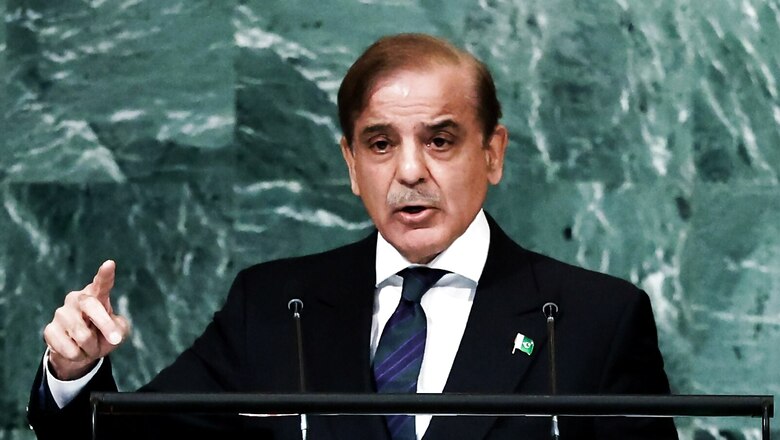
views
With the virtual meeting with the International Monetary Fund (IMF) for staff-level agreement for immediate release of $1.1 billion to save Pakistan from bankruptcy set to begin on Monday, the federal government is looking for ways to comply with the conditions put forth by the IMF.
Despite negotiations for 10 days, the IMF and Pakistan failed to seek the expected bailout package last week, with the Pakistan government only receiving a memorandum on the terms and conditions from the IMF for completion of a $7-billion loan programme.
The Memorandum of Economic and Financial Policies (MEFP) is a key document that describes all conditions, steps, and policy measures on the basis of which the two sides declare the staff-level agreement. Once the draft MEFP is shared, the two sides discuss the policy measures outlined in the document. Once these are finalised, a staff-level agreement is signed, which is then forwarded to the International Monetary Fund’s (IMF) executive board for approval.
An IMF mission led by Nathan Porter, head of the IMF mission, visited Islamabad from January 31 to February 9 to hold discussions under the ninth review of the authorities’ programme supported by the IMF Extended Fund Facility (EFF) arrangement. The successful completion of the ninth review will bring USD 1.2 billion to the cash-strapped country in the form of the next tranche.
DEFENCE BUDGET CUT
The government has asked the Defense Ministry about the IMF condition to cut the Defense Budget by 10%-15%, according to a top source in the Finance Ministry. The Defense Ministry has responded in consultation with Army General Headquarters (GHQs) that only 5%-10% cut can be imposed in the non-combat budget.
“As Pakistan Security Forces are facing internal and external threats, our forces are engaged on the Pak-Afghan Border and have huge threats from the Tehreek-e-Taliban Pakistan (TTP), militants in Balochistan and Khyber-Pakhtoonkhwa provinces,” the source added.
HELP FROM US, CHINA
Pakistan could request its security partner countries such as the United States, UAE, Saudi Arabia and China to bail it out from the current economic crisis by depositing $10-12 bBillion in the State Bank of Pakistan (SBP).
For collection of Rs 170 billion in the remaining period of the current fiscal year, the government will have to impose taxes of Rs 453 billion, having an annual impact on the collection of the desired amount.
The hiking of the goods and services tax (GST) rate by 1 per cent will fetch Rs 50-55 billion in the remaining period of the current fiscal year.
HIKE IN POWER TARIFF
The IMF has also demanded implementation of the revised Circular Debt Management Plan (CDMP) by hiking the electricity tariff in the range of Rs 8-11 per unit, removing un-targeted subsidies under Zero Rating Industries (ZRI), doing away with the Kissan Package, increasing gas tariff up to 25-30 per cent on average and securing confirmation from bilateral, multilateral and other avenues to generate dollar inflows in the range of $12-13 billion.
The other taxation measures include hiking the tax rates on cigarettes, beverages, real estate transactions and expansive vehicles, etc.
The tax collection of the Federal Board of Revenue (FBR) of Pakistan will be jacked up proportionally, so the annual tax collection target will go up to Rs 7,640 billion.
Read all the Latest News here



















Comments
0 comment